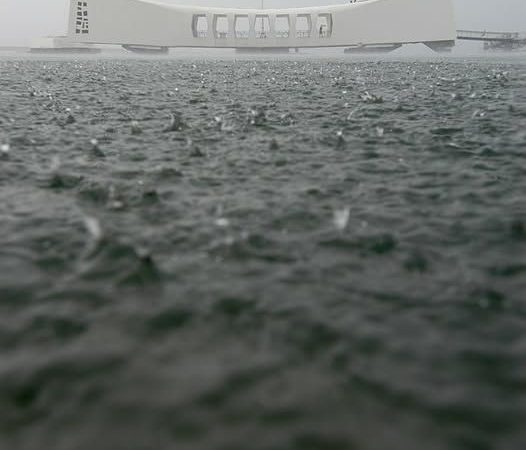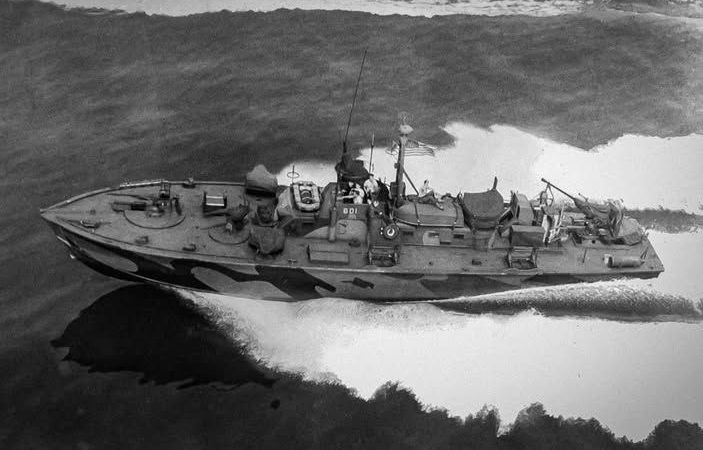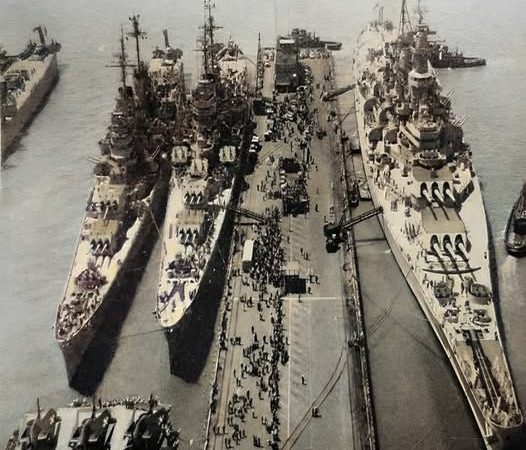Battleship HMS Duke of York in the Mediterranean Sea (1939-1945)
HMS Duke of York was a British battleship of the King George V class, commissioned during World War II. Launched in 1940, it played a significant role in naval operations from 1939 to 1945, particularly in the Mediterranean theater.
HMS Duke of York was constructed at John Brown & Company’s shipyard on the River Clyde. Like other ships in the King George V class, it was designed to meet the restrictions of the Washington Naval Treaty, limiting its displacement to 35,000 tons and armament to 14-inch guns. The ship carried ten 14-inch guns in two forward and one aft turret, along with a secondary armament of 5.25-inch dual-purpose guns.

After her commissioning in November 1941, Duke of York joined the British Home Fleet, initially operating in the North Atlantic and Arctic waters. However, by 1943, with the war’s focus shifting towards the Mediterranean and Southern Europe, HMS Duke of York was deployed to the Mediterranean to participate in key Allied naval operations.
The Mediterranean was a vital theater in World War II, serving as a major supply route for the Allies and a contested region between the Axis powers, especially Italy and Germany. In 1943, the Duke of York played a crucial role in supporting Allied invasions in North Africa, Sicily, and mainland Italy. One of the significant events of the battleship’s deployment in the Mediterranean was her support of Operation Husky, the Allied invasion of Sicily in July 1943.

In this operation, HMS Duke of York provided naval gunfire support, bombarding Italian coastal defenses and enemy positions in the vicinity. Its main armament of 14-inch guns was capable of long-range precision bombardment, which greatly aided the advancing Allied forces during the invasion. This period also saw her involved in convoy protection duties, safeguarding crucial Allied supply lines from German and Italian naval and air attacks.
Although HMS Duke of York spent a relatively brief period in the Mediterranean, its presence contributed to the success of key Allied operations in the region. By the end of 1943, she returned to the Home Fleet and participated in other significant actions, such as the sinking of the German battleship Scharnhorst during the Battle of North Cape in December 1943.
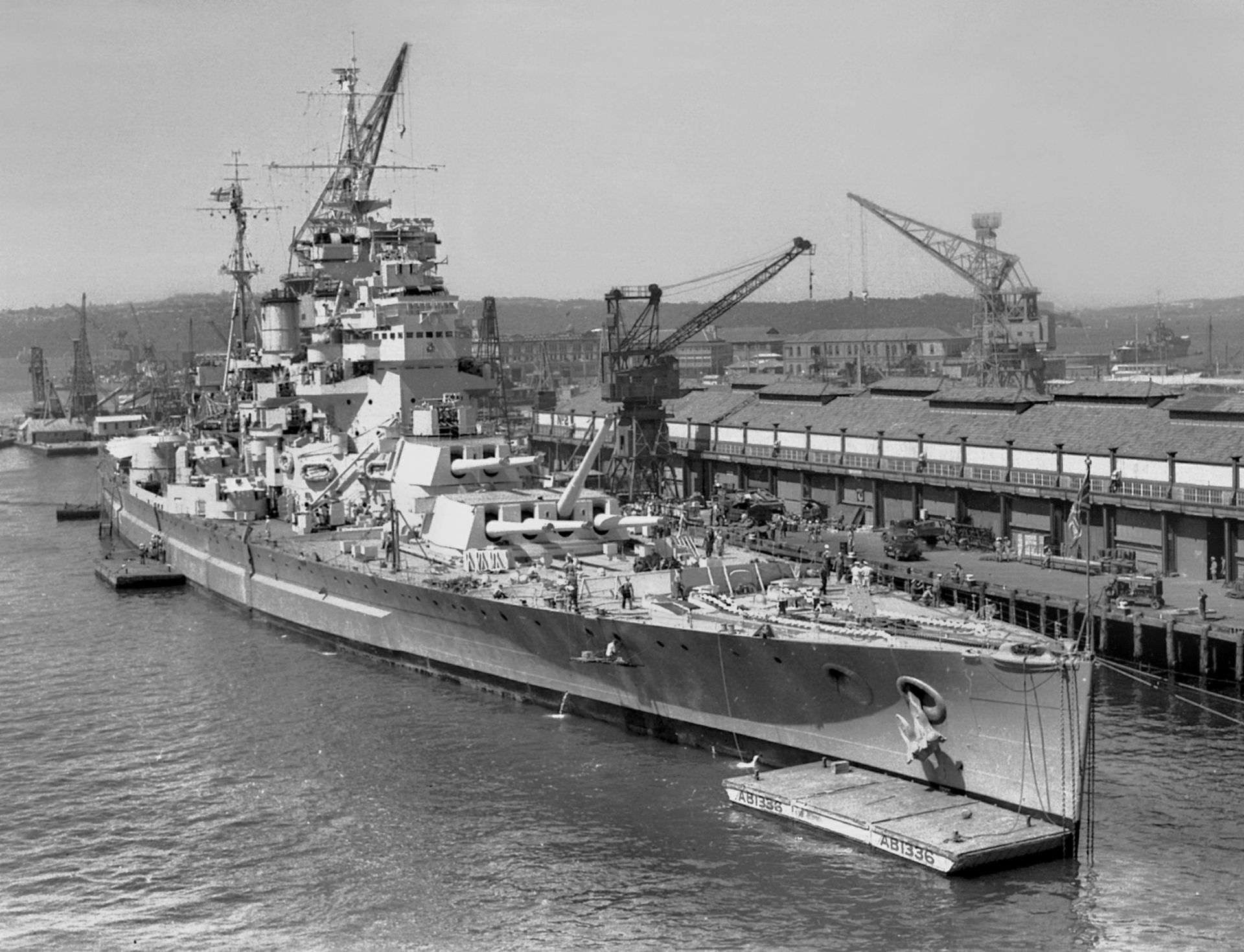
As the war progressed, the ship continued its service, primarily in the Atlantic and Arctic, before being decommissioned after the war. After serving as a flagship and seeing action in critical battles, Duke of York was eventually scrapped in 1957.
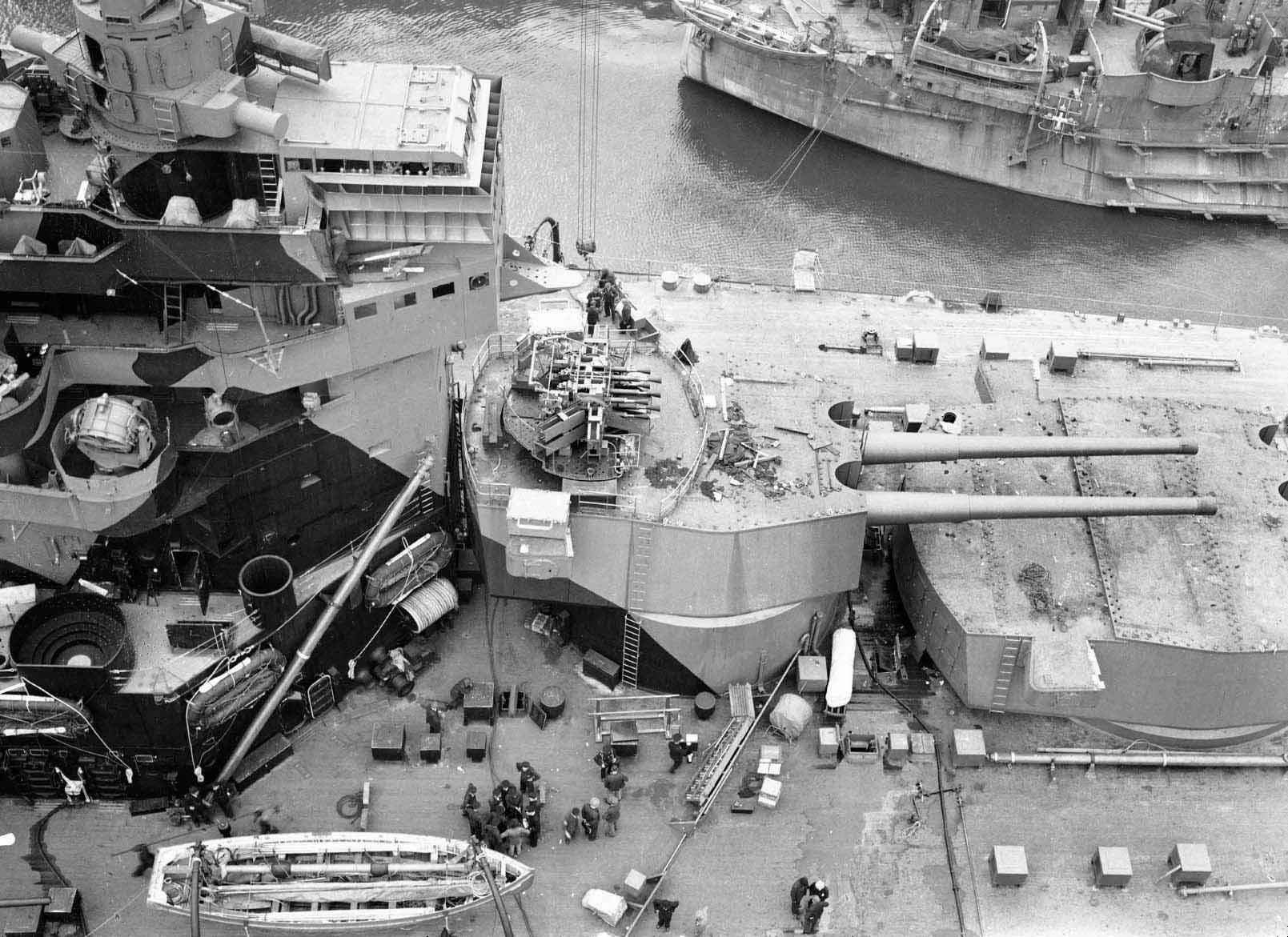
HMS Duke of York was a symbol of British naval power during World War II, serving in multiple theaters of war, including the Mediterranean. Its contributions to the Allied efforts, particularly in Sicily and Italy, helped secure vital victories against Axis forces. Today, the ship is remembered as part of the proud legacy of the British Royal Navy during the war.

